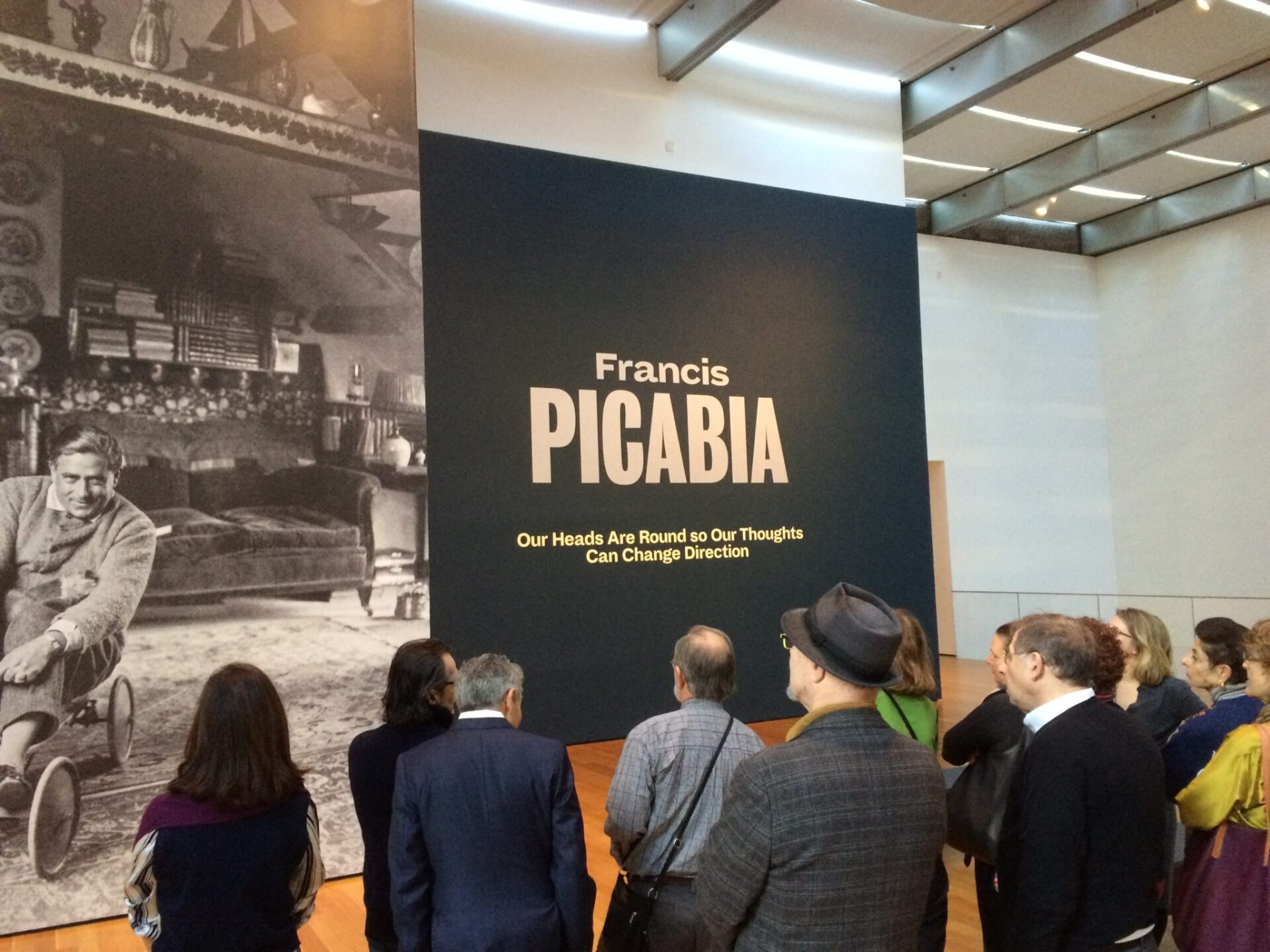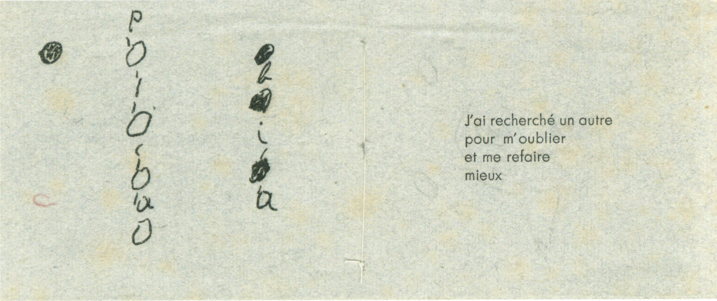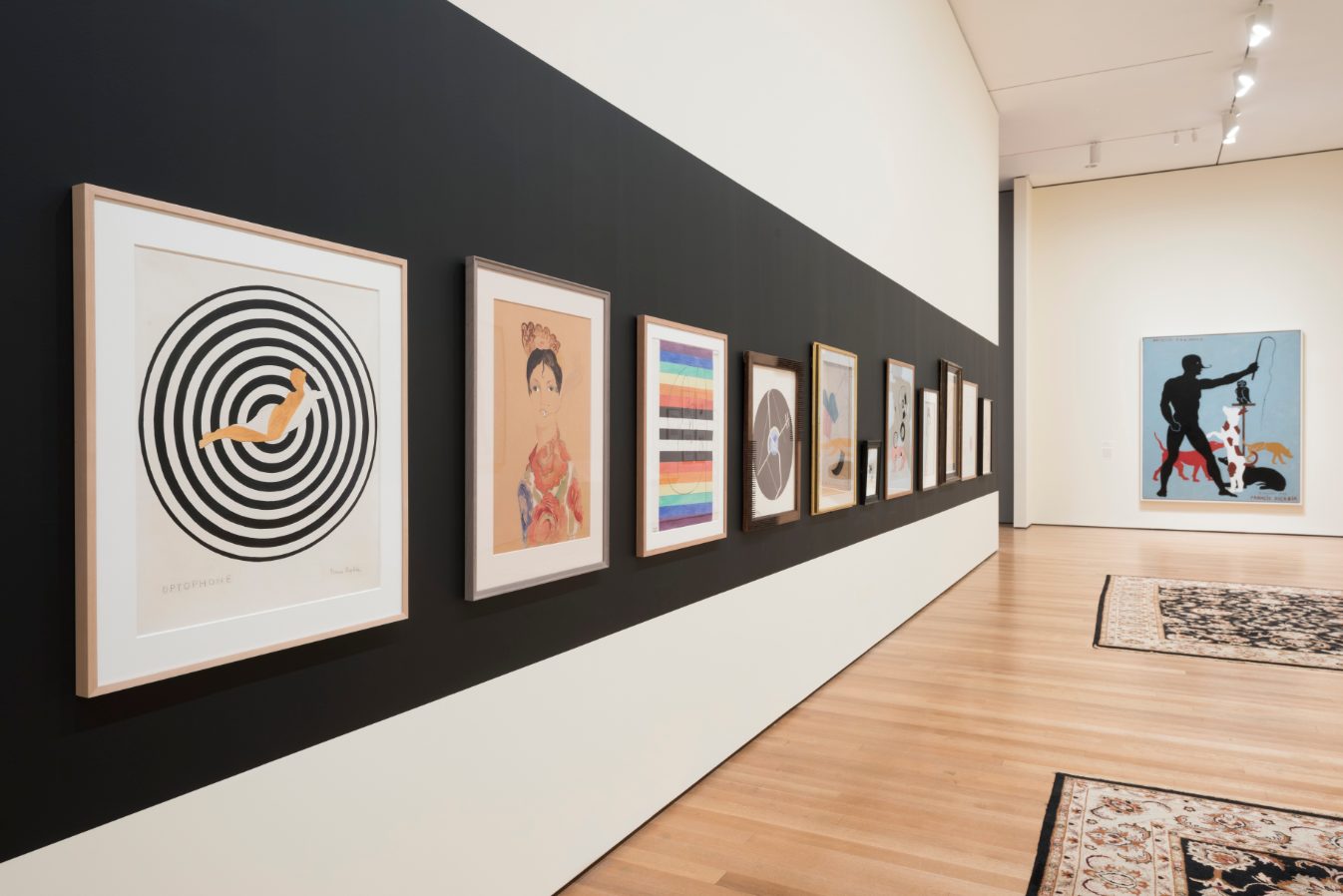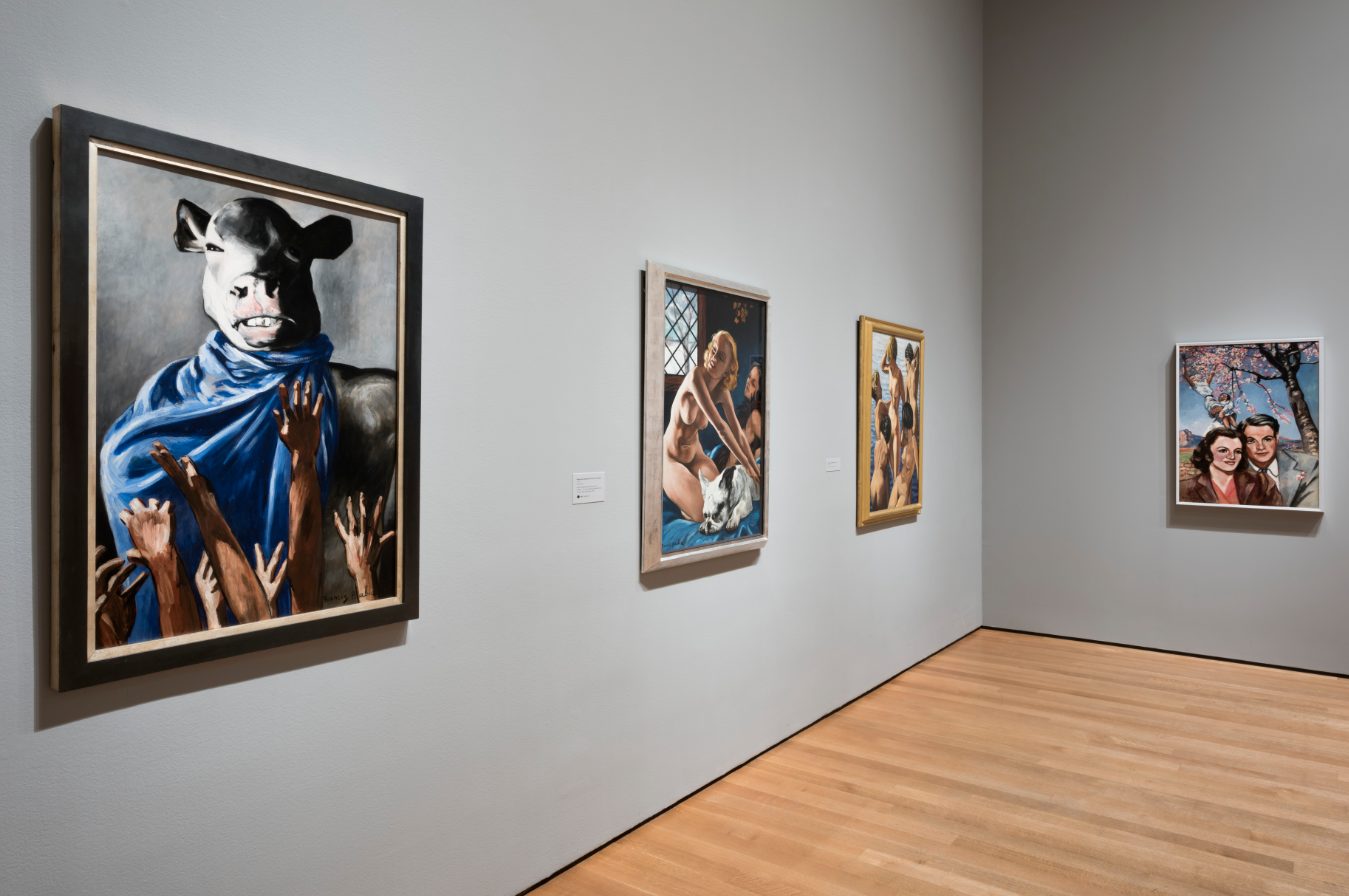
“J’ai recherché un autre pour m’oublier et me refaire mieux” (“I have looked for another to forget myself and recreate myself”). On the page facing this line by the poet Pierre André Benoit a clumsy, almost childish, writing forms the letters of a name, interspaced by circular dots. After understanding how to decipher it, we finally read the name of its creator, Picabia. The short poem, together with this conscious visual attempt to obliterate his own identity, could not better describe the personality and the eclectic genius of the artist Francis Picabia, to which the Museum of Modern Art dedicates a major retrospective, the first substantial exhibition on him in the institution, open through March 19, 2017.

The protean nature of Picabia’s art is well explored in MoMA’s impressive survey, which is organized chronologically and includes all the major bodies of work that Picabia produced in his career: Impressionist, Cubist, Dadaist, Surrealist, kitschy Figurative, Abstract. The subtitle of the show, “our heads are round so our thoughts can change direction,” hints at the circularity and the extraordinary creativity of Picabia’s oeuvre. As Assistant Curator Talia Kwartler pointed out during the recent private tour she gave for the Center for Italian Modern Art’s members, the exhibition is an opportunity to reconsider Picabia’s career as a whole in order to question the existing established modernist narrative—where Picabia has been omitted or associated with Dada only.
Picabia has always been considered (and pretty much was) a sort of enfant gâté of the French art scene. Born to a wealthy family in 1879, he enjoyed an economically privileged position that allowed him all the freedom he wanted for his artistic pursuits. MoMA’s exhibition takes offers us a tour-de-force ride through the continuous and abrupt stylistic and iconographic changes of Picabia’s art over the nearly fifty years of his career. From the early “Impressionist” paintings, where the very fundamental tenet of Impressionism—painting en plain air—is subverted through the use of photographic source material and by mocking the style of artists like Alfred Sisley or Paul Signac, to the moment when Picabia engaged more effectively with the avant-garde, in his reaction to Cubist painting and his involvement with Stieglitz’s 291 and the first “mechanomorphs.”
Picabia used strategies in his work, from very early on—such as parody, appropriation and outright plagiarism—that always distanced him from the contemporary avant-garde. It is not surprising that he became good friends with Marcel Duchamp. Particularly interesting is also Picabia’s contradictory approach to abstraction and the coexistence of multiple themes, styles, and genres at one single moment, which is conveyed very well in the reconstruction at MoMA of Picabia’s solo show at the Galeries Dalmau in 1922 in Barcelona. That show surprisingly featured Picabia’s abstract works and mechanical figures together with figurative portraits of Spanish women.

The 1920s were a very creative moment for Picabia, after his decision to move to the South of France, where he had a private residence built in Mougins, the Château de Mai. He pursued different contradictory avenues at the same time in the series of the Collages, hybrid paintings with collaged elements from everyday life, and the so-called Monsters, which feature grotesque representations of couples celebrating the carnival, created using enamel paint known as ripolin. Towards the end of the decade he created the Transparencies, layered canvases bearing a strong influence of cinema. In relation to this work, Picabia’s involvement with ballet and cinema is explored in the two experimental projects of Relâche and Entr’acte in 1924.
The decision to devote an entire room to the figurative works that Picabia painted during World War II is particularly meaningful, because of the bias through which they are still perceived. In fact, these works present a naturalistic style that is not at all remote from the one developed by artists officially sanctioned by the Third Reich. Their problematic nature is increased by the fact that the artist was arrested as a collaborator in October 1944, although he was later cleared of that accusation. These works were not included in the last major Picabia show held in the United States, at the Guggenheim Museum in New York in 1970, where only the earlier work of his career was featured.

Picabia’s art constantly challenged and destabilized common notions of beauty, quality, and taste. In these bizarre and unsettling 1940s works, the use Picabia made of pre-existing photographic sources taken from popular, sometimes pornographic, magazines characterizes them as examples of a certain taste for “bad painting” that would attract the attention of artists beginning in the late 1970s, such as Sigmar Polke or David Salle. It was starting from them and their fresh look that Picabia’s career was finally reconsidered in its entirety and without biases, a result achieved on a different and more institutional level by the current outstanding MoMA show. The catalogue presents important new scholarship on the artist, and we hope that the exhibition will foster new discussion and studies on the less appreciated periods in Picabia’s oeuvre, on which considerable work has yet to be done.
